




Data Facts delivers unmatched background screening expertise, with personalized support you can depend on. Our foundation is built on technology-driven information for people, about people, by people. We employ highly trained sta to assist you with every need, and o er live chat on our website supported by real team members. Choose the partner who puts your needs first by o ering a dedicated approach to serving their clients...because you deserve a better experience.








Weare honored to feature Lisa May, Executive Vice President with Data Facts, on our cover this month. She is responsible for molding the company vision, setting long term company goals, and making high-level decisions. This year, Lisa celebrates her 28th anniversary at Data Facts. During her time there, she has contributed significantly to the company’s growth and success through sales, operations, marketing, and management roles. Read all about Lisa on Page 4. We are proud to have Data Facts as one of our charter sponsors since launching HR Professionals Magazine in 2011. Congratulations to Data Facts on 35 years of serving the HR profession with employment verifications and many other services!
Our July issue is very special because we feature some of the top educational programs for HR professionals in the Southeast. If you would like to finish your degree or perhaps obtain a graduate degree, you will find many excellent offerings in this issue. Be sure to check out WGU.edu for their online HR degrees including their MBA degree on Page 3 and their new master’s degree in HR. We are showcasing many Southeastern colleges and universities with an array of online degree programs that are bound to meet your needs. Check out these excellent programs and find the one that suits your needs. Visit SHRM.org for in-person and virtual educational programs available.

It was great visiting with Dorice Horenstein, author of Moments of the Heart, featured in our Book Look article in the May24 issue. Dorice was a speaker on the 2023 HR Conference Cruise. We were honored to be invited to her home for breakfast while in Portland.
If you are not currently certified as an HR professional, I invite you to attend our upcoming Online HRCI | PHR | SPHR Certification Exam Prep Class beginning August 21. We will meet on Monday and Wednesday evenings from 6 PM CT to 7 PM CT. According to recent statistics, certified HR professionals earn up to 20% more than non-certified HR professionals! Our class is guaranteed so that if you do not pass your exam the first time, you may take the next class at no charge. I will stay with you until you pass! Our class has a 90% pass rate. You can register on our website at www.hrprofessionalsmagazine.com. The deadline to register is August 15. See details on our website or email me at cynthia@hrprosmagazine.com.
Watch your email for your invitation to our July complimentary webinar sponsored by Data Facts on July 26. This webinar is pre-approved for one HRCI business credit and one SHRM PDC. If you are not currently receiving our monthly email invitation, you can subscribe on our website at www.hrprofessionalsmagazine.com.

cynthia@hrprosmagazine.com
Connect with me on LinkedIn:https://www.linkedin.com/in/cynthiathompson-mba-shrm-scp-sphr-325b8715/ Like us on Facebook.com/HRProfessionalsMagazine
Congratulations to grandson Wyatt Schmidt on his graduation from LaSalle Catholic College Preparatory School in Portland, OR, in June! He is entering the engineering school at Oregon State University. He will join his sister Molly who is already attending the engineering school there.


From the time 11-year-old Lisa talked some neighbor friends into starting a lemonade stand near a prime cross street, she knew a business career was her destiny.
In 1991, Lisa joined Data Facts as a Sales Representative for the company’s Credit Reporting division. Within five years, she was moved to the Background Screening division and promoted to the Background Screening Division Sales Manager. As the company grew into a national organization, she was promoted again to the VP of Marketing & Sales to fully develop a strong marketing department. In 2021, Lisa was promoted to Executive Vice President and became part of the Data Facts ownership.
She won the Salesperson of the Year or Eagle Award four times and Data Facts’ highest award, The Diamond Award (Employee of the Year), once.
How was she so successful in sales? “I ask questions and really listen to the client to uncover pain points and find solutions for them. I believe clients understand my commitment to their success as a partner. I may even discover things that they didn’t even know were a problem.”
As a passionate community leader, she has served on the SHRM-Memphis Board and completed the New Memphis Institute’s Leadership Development Intensive course. She is also involved with the Chattanooga Women’s Leadership Institute, the Southeast Tennessee SHRM chapter, and many charities like the Memphis Humane Society and St. Jude.
Lisa attributes her success to her people skills and her ability to adapt to change. She says: “Success is about building strong relationships with your team and clients, as trust and collaboration are keys to success. Since the industry changes rapidly, staying adaptable and open to new challenges is essential. Embracing opportunities where I could learn and grow helped me make a direct contribution and move my career forward.”
As an avid learner, Lisa sought out ways to develop her skillset and deepen her knowledge. I've always believed that you can never stop learning. “I immersed myself in the changing technology trends. I attended HR Technology Conferences regularly, which provided invaluable insights into the latest advancements and trends. Additionally, she built strategic partnerships with our vendors to learn everything they knew, which helped me stay ahead of the curve. Even with the huge tech advances, I always kept my focus on understanding and anticipating what our customers needed.”
Lisa earned a Bachelor of Business Administration at the University of Memphis, majoring in Marketing.
In her spare time, she enjoys spending time with her family and dogs, boating, gardening, and traveling.

Earn 22 PDCs!
When it comes to hiring, you want to bring in the best while showing off your organization. Become a high-performing recruitment expert with the SHRM Talent Acquisition Specialty Credential!

Develop essential recruiting skills to build a sustainable, exceptional workforce today! shrm.org/talent

As Data Facts celebrates its 35th year in business, it’s a good time to reflect on the tremendous changes the background screening industry has seen since the late 80’s. From manual records and paper trails to today’s digital footprints and artificial intelligence (AI), the transformation has been amazing. Here are some highlights of these developments and how they shaped the industry.
In the 1980s, the concept of professional background screening was relatively new and not widely accepted. Employers were unlikely to invest in formal background checks, relying on references, direct interviews, and gut feelings instead. Many businesses depended heavily on word-of-mouth recommendations and the trustworthiness of personal networks, and some just blindly rolled the dice on new hires. This approach, while simpler, lacked thoroughness and left room for inaccuracies and big risks in hiring decisions.
Data Facts was founded in the late 80’s when the background screening industry was labor-intensive. Employers relied heavily on paper records, phone calls, and face-to-face interviews to verify the backgrounds of potential hires. Background checks often involved manually searching through public records, visiting courthouses, and contacting previous employers and educational institutions directly. Relying on physical documents created major concerns with data accuracy and integrity. Misfiling, losing documents, data errors, and delays were common, making the screening process cumbersome and less reliable.
Early 1990s. Cloud-Based Solutions via the Internet
The 1990s welcomed the internet and all the convenience (and headaches) it brought. Computerization and the integration of databases transformed the industry. Background screening companies began digitizing records and automating certain aspects of the screening process. This shift significantly reduced the time and effort required to conduct background checks. However, some background screening companies were slow to invest in expensive technology and became obsolete.
Late 1990s. Databases Are Born and Grow
The internet gave background screening companies access to more information than ever before with online data. Newly built databases provided quicker searches and more comprehensive checks. Public records, criminal databases, and other relevant information became more accessible, enabling background screening companies to provide faster and more accurate results.
The 2000s. Say Hello to Innovation and Regulation
Companies widely adopted the internet and digital databases. This acceptance transformed how background checks were conducted. Additionally, stricter regulations like the amendments to the Fair Credit Reporting Act (FCRA) ensured that background checks were conducted ethically and transparently. This decade also saw the rise of identity verification. Because of the improved accuracy and timeliness of the reports, more employers started seeing the benefits of adding third-party background screening to their hiring process.
The 2010s. Laws Shape Background
Trends in employment law significantly influenced background screening processes. These trends pushed the industry toward greater fairness, equity, and compliance, aligning with time’s evolving legal and ethical standards.
• The "Ban the Box" movement advocates for the removal of the checkbox asking about criminal history on initial job applications. To comply with these new regulations, companies began conducting criminal background checks later in the hiring process, typically after a conditional job offer. The industry responded by developing more tailored and compliant screening solutions, ensuring that employers could still make informed hiring decisions while respecting the rights of applicants.
• Non-discriminatory practices, reinforced by legislation like the Equal Employment Opportunity Commission laws, required background checks to be free from racial, gender, and other biases.
• Salary history bans, implemented to combat wage inequality, necessitated changes in how background screening companies handled employment verifications and candidate evaluations.
• Many cities and states require special disclosures the candidate must sign and special adverse action requirements and language the employer must follow. Diligence in this area ensures the appropriate forms are presented to the applicant when they complete the authorization and disclosures through advanced technology.
The explosion of digital information empowered background screening companies to leverage big data analytics and extract valuable insights.
AI and machine learning algorithms enhanced background screening accuracy and efficiency. These technologies enabled background screening companies to identify patterns in data, predict potential risks, and make more informed decisions. Automation also reduced manual requirements, minimized errors, and expedited the screening process.
The digital age also initiated the rise of social media and online presence. Background screening companies started incorporating social media screening as part of their services. This move gave employers a more holistic view of candidates. The downside was these raised concerns about privacy and ethical considerations. The upside was it offered valuable insights into candidates' behavior, character, and suitability for specific roles.
The background screening industry is poised for more innovation and advancement. Emerging technologies like AI have the potential to revolutionize background screening in numerous ways.
Additionally, the focus on DEI continuously drives the need for more inclusive and bias-free background screening practices. This shift aligns with the broader societal push for greater fairness and equity in the hiring process.
As Data Facts celebrates its 35th anniversary, the background screening industry is a big example of the power of innovation and adaptation. From manual processes and paper trails to the current era of digital footprints and AI-driven analytics, the industry has undergone a remarkable transformation. With every technological advancement and regulatory development, background screening has become more efficient, accurate, unbiased, and reliable.
AUGUST 25-28,
Rosen Shingle Creek I 9939 Universal Boulevard
Orlando, FL 32819
• Build your network of potential new leads, peers, mentors, and collaborators
• Gain targeted knowledge from information presented to fit your needs
• Get answers to questions from experts in the field
• Be inspired by stories from keynote and concurrent speakers
Have fun... there is something for everyone!














By STEVE SPURLOCK
Intoday's dynamic business landscape, ensuring the security of an organization goes beyond just safeguarding physical assets and digital infrastructure. One often overlooked, yet critical, aspect of organizational security is the proper documentation of employee performance. Human Resource (HR) professionals play a pivotal role in this process, as they are entrusted with managing and maintaining employee records. In this article, we delve into three areas where if you are doing it right has a direct correlation to enhancing the overall security and safety of an organization.
Effective performance documentation provides HR professionals and managers with a comprehensive overview of an employee's work history, including achievements, areas of improvement, and any performance-related issues. Timely identification of performance issues allows organizations to take proactive measures such as coaching, training, or corrective action plans to address deficiencies before they escalate. This proactive approach not only improves individual employee performance but also contributes to the overall productivity and success of the organization.
Performance documentation serves as a valuable resource during various decision-making processes within an organization. Whether it's evaluating employee promotions, transfers, or disciplinary actions, having well-documented performance records enables HR professionals and management to make informed and fair decisions based on objective data rather than subjective opinions or biases. This fosters transparency and equity in the workplace, which are essential for maintaining employee morale and organizational integrity.
Proper documentation of employee performance directly contributes to enhancing the overall security of an organization in several ways:
Monitoring and Detection – Detailed performance documentation enables HR professionals and management to monitor employee behavior and performance trends effectively. This proactive monitoring facilitates the early detection of any suspicious activities or security breaches within the organization, allowing for timely intervention and mitigation measures to be implemented.
Compliance with Security Policies – Documentation of employee performance plays a crucial role in ensuring compliance with security policies and protocols established by the organization. By documenting employee adherence to security procedures, training completion, and compliance with data protection regulations, HR departments contribute to strengthening the organization's overall security posture.
Exit Interviews and Off-boarding – When employees leave the organization, proper documentation of their performance becomes instrumental during exit interviews and offboarding processes. Conducting thorough exit interviews and documenting the reasons for separation can help identify any security concerns, such as data theft or insider threats, and mitigate potential risks associated with departing employees.
In conclusion, proper documentation of employee performance is not only essential for HR management but also plays a vital role in enhancing the overall security of an organization. By ensuring legal compliance, identifying performance issues, supporting decision-making processes, and enhancing security protocols, HR professionals contribute significantly to safeguarding the integrity and reputation of the organization. Embracing a culture of meticulous performance documentation not only mitigates risks but also fosters a secure and resilient organizational environment conducive to long-term success.
By prioritizing proper documentation practices, HR professionals can effectively protect the interests of the organization while promoting a culture of accountability, transparency, and security across all levels of the workforce.
Steve Spurlock, Consultant spurlock@safehavensecuritygroup.com
SafeHaven Security Group www.safehavensecuritygroup.com



April 19, 2024, the Equal Employment Opportunity Commission (EEOC) published its Final Rule and interpretative guidance implementing the Pregnant Workers Fairness Act, 42 USC §2000gg (PWFA). This article will address some of the more significant provisions of the Final Rule.
1. Background
On December 29, 2022, President Biden signed the PWFA into law, which requires employers with 15 or more employees to provide reasonable accommodations to a qualified employee or applicant’s known limitation related to, affected by or arising out of pregnancy, childbirth, or related medical conditions, subject to undue hardship. Of course, there are already federal (and state) laws that provide protections for pregnancy, and related medical conditions, such as the Pregnancy Discrimination Act of 1978, which amended Title VII of the Civil Rights Act of 1964, 42 U.S.C. §§ 2000e et seq., and the Family and Medical Leave Act (FMLA). The PWFA was enacted arguably to address gaps in existing laws, and the protections the PWFA provides for employees (and the burdens it creates for employers) go much further than existing laws.
2. “Related Medical Conditions” – broader than the ADA
In addition to pregnancy and childbirth, the PWFA covers “related medical conditions.” The Final Rule provides examples of conditions that may be “related medical conditions,” such as miscarriage, stillbirth or abortion; nerve injuries; carpal tunnel syndrome; chronic migraines; dehydration; hemorrhoids; nausea or vomiting; anxiety, depression or psychosis; postpartum depression, anxiety or psychosis; menstruation; lactation and conditions related to lactation. The Final Rule notes that the list is not exhaustive.
The EEOC goes to some length to address the decision to include abortion in its definition of “related medical conditions,” noting that including abortion in the list does not require an employer-sponsored health plan to pay for or cover any particular item, procedure, or treatment including an abortion, and does not require an employer to pay any travel related expenses for an abortion, but that the type of accommodation most likely to be sought under the PWFA regarding an abortion will be time off to attend a medical appointment or for recovery.
3. Documentation – more restrictive than the ADA
Under the PWFA, an employer may not delay or deny a reasonable accommodation based on an employee or applicant failing to provide supporting documentation, unless requiring the supporting documentation is reasonable under the circumstances for the employer to determine whether to provide the accommodation. When an employer seeks documentation under the PWFA, it is limited to documentation “that is reasonable under the circumstances... to determine whether to grant the accommodation.”
The Final Rule contains five (5) examples of when it will not be considered reasonable for an employer to seek supporting documentation from an employee to support an accommodation request: (1) where the need is obvious; (2) when the employer already has sufficient information; (3) when a pregnant employee seeks a “predictable assessments” accommodation, such to carry/drink water during the work day, take additional restroom or eat/ drink breaks, or seeks modifications in sitting/standing as part of her job;
By MARY C. MOFFATT
(4) when the reasonable accommodation is related pumping or (5) when the requested accommodation is available to employees (without known limitations under the PWFA) pursuant to a covered entity’s policies or practices without submitting supporting documentation.
In a departure from the ADA, the PWFA defines a “qualified employee” as one “who, with or without reasonable accommodation, can perform the essential functions of the employment position, except that an employee or applicant shall be considered qualified if—
(A) any inability to perform an essential function is for a temporary period;
(B) the essential function could be performed in the near future; and
(C) the inability to perform the essential function can be reasonably accommodated.”
In the Final Rule, the EEOC interprets these provisions to require suspension of one or more essential functions of a position on a temporary basis. The Final Rule provides that suspension of essential functions could be accomplished either by the employee performing the remaining functions of their position or other arrangements being made such as performing other functions assigned by the covered entity, or the employee being assigned or transferred temporarily to a different job, or light or modified duty, all of which must be considered through the interactive process.
Like the ADA, the PWFA provides it is unlawful for a covered entity to not make reasonable accommodations for covered limitations unless the entity can demonstrate that the accommodation would impose an undue hardship on the operation of the business. Unlike the ADA, as noted above, the PWFA Final Rule provides that the temporary suspension of one or more essential functions is considered a potential reasonable accommodation.
In the Final Rule, the EEOC provides examples of reasonable accommodations, which goes further than the ADA, including steps such as job restructuring, change of work site, or “adjustments to allow an employee to work without increased pain or increased risk to the employee’s health or the health of the pregnancy”; and temporarily suspending one or more essential job functions.
The Final Rule lists factors to be considered in the undue hardship analysis, most of which are very similar to the same analysis under the ADA. However, whether the “temporary suspension of an essential function(s)” would cause undue hardship has its own list of considerations, which includes “whether there are other employees, temporary employees, or third parties who can perform or be hired to perform the essential functions…. (and) whether the essential functions can be postponed or remain unperformed for any length of time and, if so, for how long.” While the EEOC notes that an employer “is not required to invent work for an employee,” this provision will require employers to analyze closely the essential functions of the position that the employee is unable to perform, and whether “other, temporary or third parties” can perform that essential function on a temporary basis.
The Commission notes that the temporary suspension of an essential function must be able to be reasonably accommodated and the employer retains the ability to establish that the reasonable accommodation causes an undue hardship. The Commission notes that an employee’s request to indefinitely suspend an essential function cannot reasonably be considered to meet the standard for “in the near future,” however, the temporary suspension of an essential function is not necessarily “indefinite” simply because the employee cannot pinpoint an exact date when they would be able to perform the essential functions.
The Commission further notes that employees may need temporary suspension of essential functions on more than one occasion. For example, an employee may need an essential function temporarily suspended during her pregnancy. After the pregnancy, the employee may be able to perform that essential function, but might need a different essential function temporarily suspended for a pregnancy-related condition, such as postpartum depression.
In the appendix to the Final Rule, the Commission provides several examples of how the regulations apply. In one example, an employee who works in a paint manufacturing plant is told by her provider to avoid certain chemicals for the remainder of her pregnancy. However, an essential function of her job involves regular exposure to these chemicals. In the example, the Commission concludes that the employee is nevertheless “qualified” for her position because “the employer can suspend the essential functions that require her to work with chemicals, while allowing her to do the remainder of her job.”
In another example, a pregnant employee is employed as a park ranger, an essential function of which involves patrolling the park and driving, which the employee is not able to perform for 12 weeks. So, the employee seeks
a 12-week suspension of the essential duty of patrolling the park. In the example, the Commission concludes “(the employee’s) need to temporarily suspend an essential function of her job may be reasonably accommodated by temporarily suspending the essential function and temporarily assigning (her) to duties such as answering questions and selling merchandise at the (park) visitor’s center.”
Of course, the examples do not address how the essential job functions will be accomplished during the suspension in order to get the overall job done – that would be up to the employer. If the employer considers it undue hardship, note the list of factors above to be considered in evaluating whether it would constitute undue hardship.
Employers should not consider the PWFA or the Final Rule simply a reiteration of existing laws. The PWFA will clearly present challenges for employers. Employers should act promptly to ensure policies are updated to address compliance with the PWFA. Supervisory and managerial training is essential for compliance and employers should seek input from employment counsel for guidance as issues arise. The attorneys at Wimberly Lawson are available to assist in providing guidance to employers and in providing supervisory/managerial training.
Mary C. Moffatt, Member
Wimberly Lawson Wright Daves & Jones PLLC Knoxville, Tennessee office mmoffatt@wimberlylawson.com

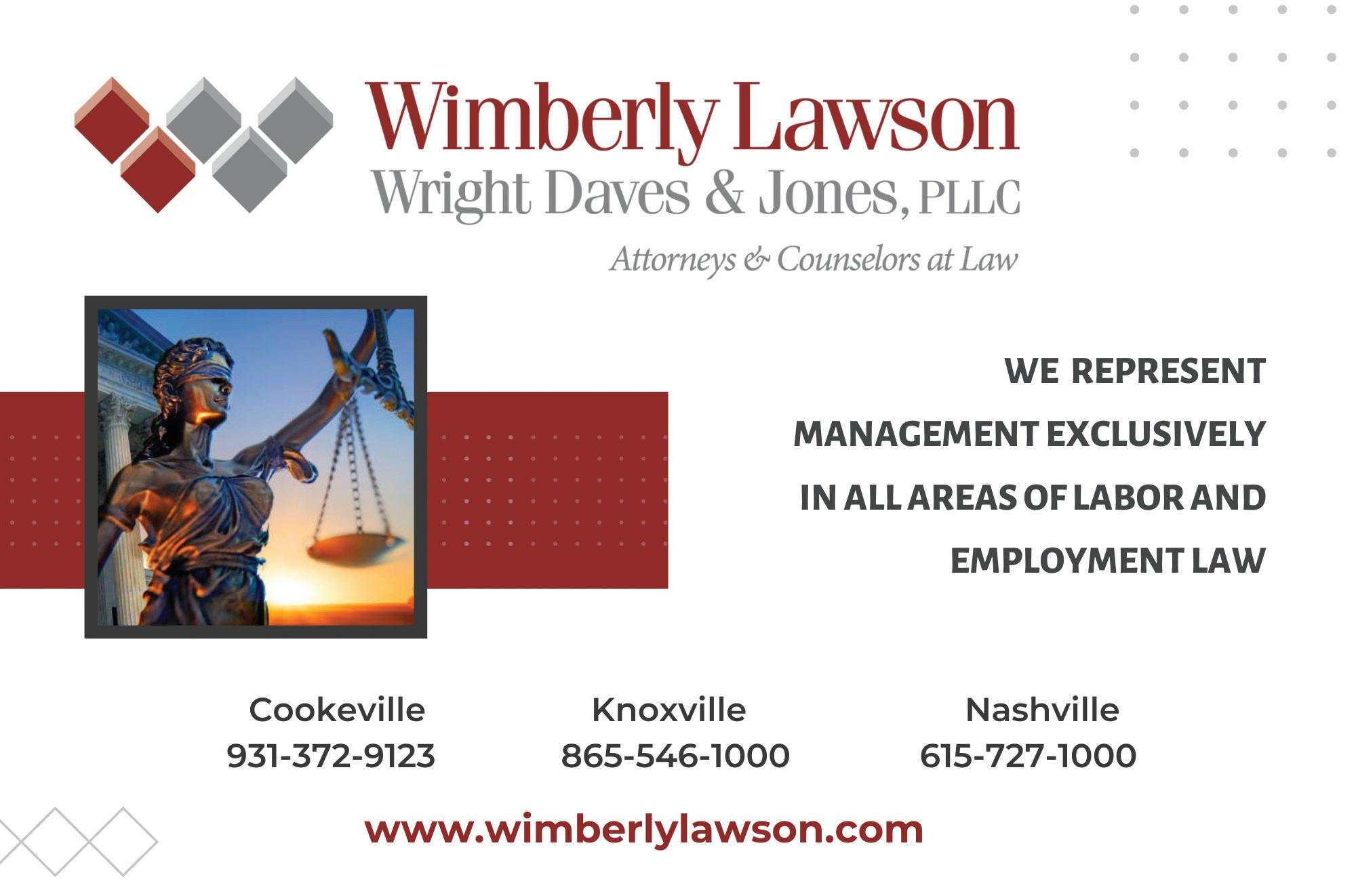


If you are ready to build on your professional accomplishments with a master’s degree, this program is for you! The Master of Professional Studies (M.P.S.) is an interdisciplinary graduate degree program designed for working professionals who wish to earn a graduate degree in their area of expertise and excel in their careers. The 30-hour M.P.S. program, which combines social sciences and professional studies, is available online 24/7.
“I used my final project to help resolve a long-term problem at work. I did the project in 2010, and I’m still

The M.P.S. has five concentrations:
• Human Resources Leadership • Leadership in Nutrition
• Operations Research •Strategic Leadership
• Training and Development
Each M.P.S. program consists of 12 hours of core requirements, plus 15 hours related directly to your chosen concentration and the 3-hour culminating project.
Whether you’re ready to become certified or simply want to keep up with emerging trends and best practices, SHRM seminars empower you with the knowledge and tools you need to take the next step in your career.
Led by industry experts, attend inperson or online to close skill gaps in HR disciplines including:
Employment Law & Compliance
Engagement & Workplace Culture
Strategy & Leadership
Talent Acquistion & Retention, and SHRM Certification & Exam Preparation

Remaining 2024 programs now available!
EXPLORE SEMINARS NOW!
shrm.org/seminars24-julyhrp
Did you know SHRM members save nearly $300 with their member discount?



To be completely honest, my understanding of the recruiting and hiring process is tenuous at best. Even as a past Director of HR who relied completely on outside recruiters, I can now see that my knowledge of the process was woefully inadequate. But let’s face it; we have confidence that those entrusted with bringing talent to our door have the skills and knowledge needed. After all, that is what we hired them for . . . right? If my naivety hits a nerve, perhaps it needs to as I have a feeling that many of our readers fall prey to this same sense of false security. That all is well within the Recruiting Department. After all, they were able to hire the candidates we needed last month . . . right? At the risk of being flippant, the cold reality of what we don’t know about this singularly critical process is staring back at us. And just as important, answers are within reach. The Hiring Tree: Laws of Applicant Attraction by Steven J. Smith was written to help human resource professionals, recruiters, talent acquisition specialists, hiring managers, business owners, and anyone involved in the hiring process to attract applicants more effectively.
In The Hiring Tree, Smith uses a simple analogy based on the growth of an apple tree to help the reader understand the concepts and principles needed to hire job applicants successfully. Appropriately, this story begins with Smith’s visit to a friend’s orchard and culminates with a better understanding of how the care taken to produce even one good apple perfectly correlates to the care it takes to find not just one good employee, but many. “We all seek the fruit,” Smith states, “but we cannot forget that it all starts with the roots of the tree and the very ground in which the tree is planted. In other words, while organizations are constantly seeking the right applicant to fill their open roles, all too often they forget the beginning of the process, which starts at the very roots of what I call the Hiring Tree.”
What first may appear as overly simplistic prose, is, in reality, an appropriate description of how a tree’s root system correlates perfectly to the core setup of an organization. And just as a tree’s root system supports its growth, rules for its care align perfectly with an organization’s core values, mission, and vision. And for organizations looking to grow, it starts with identifying, hiring, and retaining qualified applicants! What readers will find is that Smith is an absolute hiring expert willing to share his expertise.
One of the primary messages conveyed regards the proper use of job ads. The problem is how most employers use their job description as their job ad, which Smith contends is the most ineffective way to market a position for hire. True, the needed content is already developed but as a recruiting tool, falls short because it essentially is a dangerous shortcut. Think about it this way. A job ad is an announcement that informs people a certain job position is available. It should be written in an
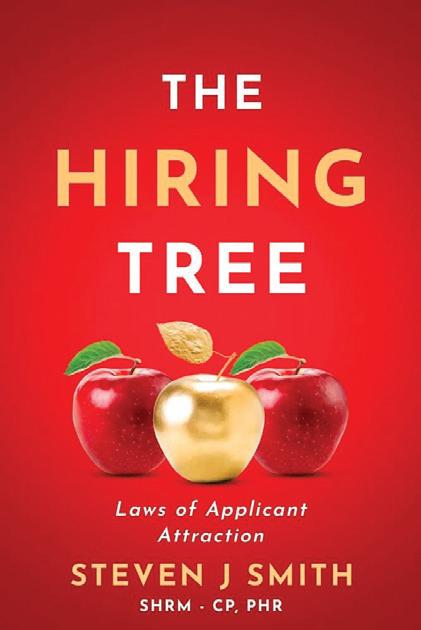
engaging tone and it should contain information not only about the job position but also about your company and the benefits you offer. Job descriptions do not and the author walks us through the do’s and don’ts. As the author clarifies, most job boards today, at their core, are search engines, meaning a job ad should also be written to be search engine optimized (SEO) to rank better, providing more visibility by job seekers, and leading to more applicants applying for an open position. Again, Smith shows us how.
Beyond the fallacies of job ads, Smith discusses effective employee referral programs, the proper use of social media sites, effectively negotiating with recruiting and/or staffing firms, and connecting with educational institutions. Also covered are principles about the acquisition of an effective applicant tracking system (ATS) and understanding specific elements that must exist as part of the application process.
Well written and researched, The Hiring Tree: Laws of Applicant Attraction is an immediately applicable read especially for those responsible for their organization’s recruiting efforts.
Although a front-to-back approach is recommended, its table of contents will undoubtedly entice many readers to engage in the more technical aspects of recruiting technology found in the final chapters. At 170 pages (13 short chapters), its focus and delivery provide numerous real-world examples of effective recruiting strategies for any corporate or educational environment.
Human Resource Professionals, Corporate Trainers, Management & Executives
About the author: Steven J. Smith, SHRM-CP & PHR will be the first to tell you that recruiting is marketing. He earned a BS in Finance at Brigham Young University and started his career in recruiting in Feb 2005. In 2008, he took a risk during a recession to help with starting a new company with Ryan Kohler, called ApplicantPro, designed to provide applicant tracking software for small to mid-sized businesses. 10,000 clients and 300 employees later, ApplicantPro has been on the Inc 5000 list 10 years in a row, something that very few companies have achieved. Steve currently serves as the Utah SHRM State Director, and he loves to volunteer with the Society for Human Resource Management (SHRM).
William Carmichael, Ed.D., CPTM Consultant wcarmichael@gmail
https://www.linkedin.com/in/wcarmchl/

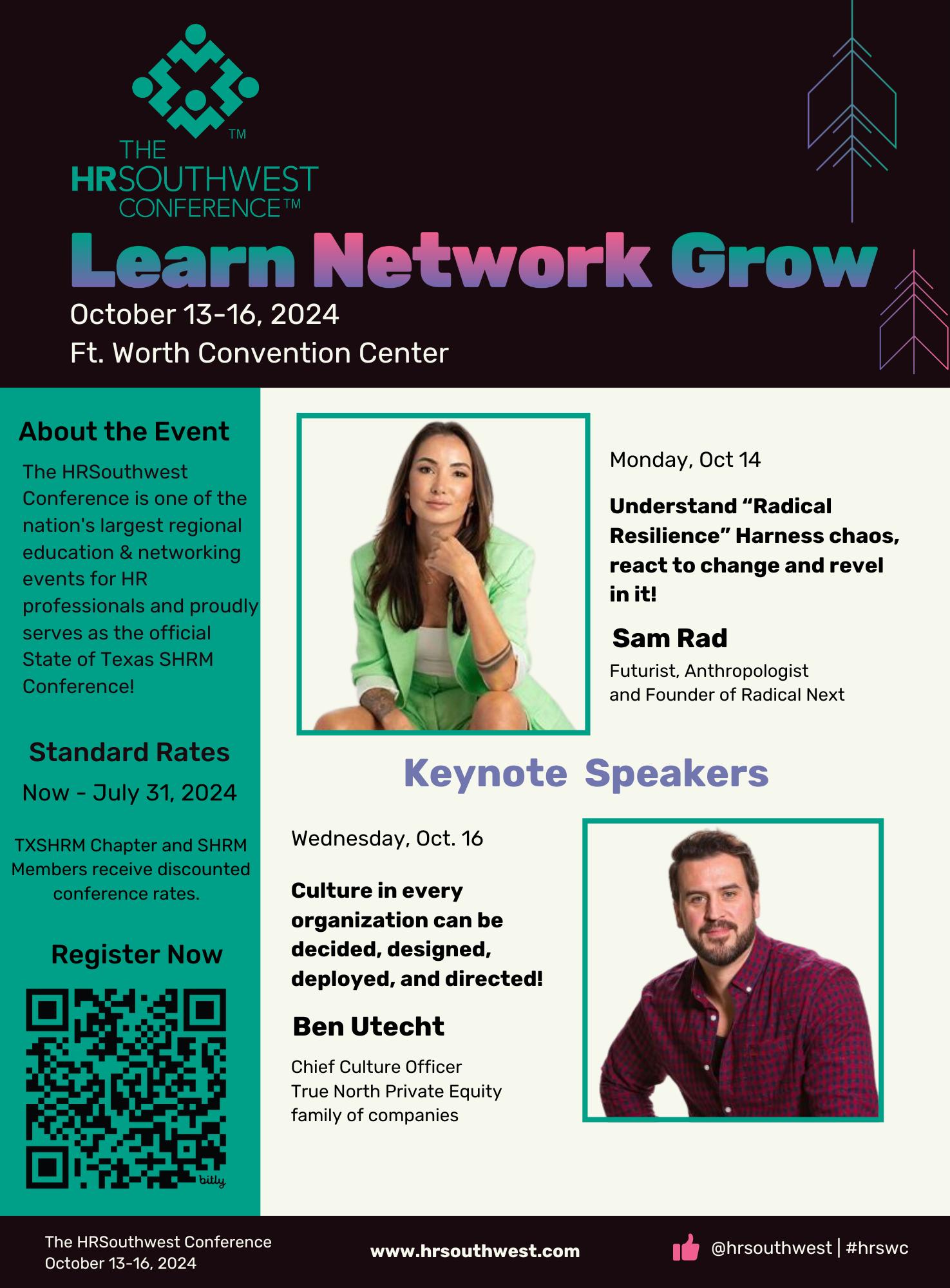


I am five years old, and I stare at her—and the vase she holds—with wide eyes.
“A girl is just like this clear glass.” Tata’s own eyes are serious. “If the vase gets cracked for any reason, you can never fix it or glue it back.” She lifts the vase, tapping the side. “It will always be seen as cracked.” Tata raises an eyebrow. “And who would want a cracked vase?” Her stern eyes meet mine. “That is the one we throw in the trash.”
This story has been passed down for generations: the glass vase is a girl’s reputation, where any scratch is deemed irreparable. A crack in my vase would destroy my family’s reputation in the community. My grandmother imparted this story unto me because she believed it to be true, as this same burden of perfection had been placed onto her. But my matrilineage are not the only ones who have grappled with preserving a perfect vase. We all have a vase, regardless of our background, our culture, our identity. Everyone has something in their lives that limits them. The fear of mistakes, the aspiration for perfection, the anxiety of being judged—don’t these worries resonate with us all?
We are taught that to advance, to be loved, we must be perfect. To make even a small mistake is to crack our vase and ruin it in perpetuity.
As individuals and as organizations, we are missing out on expanses of creativity when we uphold these imposed expectations. After all, vases are global. As a coach, I have interacted with individuals across genders, ethnicities, cultures who hold these anxieties. All of us have been conditioned to think we aren’t good enough. All of us feel the confines of a vase.
So what can we do? How do we question these stories?
I never forgot my grandmother’s words. Her belief came to be my own: a cracked vase was worthless. As I grew up, I internalized that expressing curiosity or voicing my opinion was unacceptable. I accepted my community’s predetermined path for my life: embody perfection, enroll in university to increase my marriageable eligibility, and marry young.
At 19, I got engaged to the most eligible bachelor in our community. Within a year we married. Shortly after, we moved to San Diego for him to pursue his career. This move thrilled me! In the United States, surely I would be allowed to finally grow beyond the vase that had confined me for the first two decades of my life.
Instead, the limitations placed upon me grew. Living in the U.S. marked only a difference in geography, not behavior, and I was my husband’s property—there to serve him and his family, to uphold a
By DIMA GHAWI
picture-perfect, clear-as-glass reputation. Such was the life expected of me. Such was the life I lived.
Until I couldn’t live that life any longer.
I am 25 years old. I am lying on my bed, drowning in depression, when a light flickers within me. This light illuminates and reflects off of the vase that confines me. Don’t I deserve better than this controlling marriage? Am I not worth more than what my husband and community impose onto me?
Can I shatter my vase and leave?
I had a choice: I could keep living to satisfy everyone around me, or I could live for me.
All of us have a choice, and we must choose what will make us rise. These choices are not easy. I knew that choosing to leave my husband was choosing to shatter my vase. I knew those shards would fly out and scratch me in the process. My husband and his family were outraged. My community whispered shame onto my parents, my siblings.
Worse than that, my own father threatened to have me killed.
The fear of losing myself overshadowed these fears. I had to leave, and in doing so I had to shatter my vase. Importantly, I did not throw away those shards, because I did not abandon my past self to grow. Rather, I embraced my new, shattered state and chose selftransformation.
The choice to shatter our vase is the choice to create something new for the future while still cherishing who we were in the past. With those shards, we can craft who we want to become.
We have been conditioned to see cracks in our vase as mistakes we must hide, but our cracks are what make us different from one another. In turn, our cracks are what make us beautiful. We also need external, collective awareness, one that threads through humanity: we need to see others’ cracks as beautiful! To let ourselves shatter our vases, to recognize the value in our cracks, we must see the value in others’ cracks.
When we choose to shatter our vase and appreciate others’ cracks, not only do we bring knowledge into our lives, but we also teach others through our example. Simultaneously, when we see other people refuse to conform to social limitations, we permit ourselves to do the same.
Representation is inspiration—a ripple effect.
My grandmother was my ripple effect, for she was the one who revealed to me that knowledge is light.
I am five years old, and my grandmother is flipping through a magazine in the kitchen. No women in our family were allowed an
education, including Tata, but she still taught herself to read as a girl by studying the shapes and sounds of letters. She read magazines, newspapers, books, anything she could get her hands on, and she planted in me the seed of empowerment—a desire for knowledge. Tata smiles at me as she rolls up the magazine, tying it with a red ribbon.
“Today, we’re playing a new game,” she says. “We’re celebrating the day you graduate from college!”
At five years old, I am too young to know what “college” was, much less why Tata is so excited about it. All the same, I am entranced by the magazine in her hand.
“I made you a diploma,” she says. “Sit here. When I announce your name, run to me and I’ll hand it to you!”
At five years old, I’m just happy to play a game with my favorite person. I sit down and eagerly wait for her to call my name.
Tata lifts her chin with pride. “Please join me in congratulating our next graduate—Dima Ghawi!”
I dart over to Tata. She leans down to shake my right hand, placing my diploma in the other. Tears well in her brown eyes, and she says, “Congratulations. I am so proud of you.”
In a rejection of graduate decorum, I tackle my grandmother into a hug.
“Remember, Dima,” Tata whispers, hugging me tightly. “Knowledge is light.”
When I left my marriage, when I shattered my vase, I became a source of inspiration to people around me—especially my mother and sister. In witnessing my example, they were encouraged to discover their own
voices, to question the vases that had been confining them. All of us have the power to be an agent of change in every life we touch, as my grandmother was for me.
Now, decades later, I often think back to Tata’s graduation game. I grapple with the contradiction that my grandmother instilled in me a desire for knowledge while simultaneously insinuating that my life would be ruined if I did not conform to our community’s standards. Part of life is living with these contradictions. Part of shattering our vase is refusing to let those contradictions make our choices for us. Everyone carries a vase within them, no matter who we are or where we’re from or where we go. That means all of us carry our vases to work, too—we bring with us the pressure for perfection, the fear of limitations.
Perhaps the ultimate responsibility of HR professionals is to recognize employees’ vases. We must create a culture of courage where it is safe for people to decide who they want to be. We must create a culture of acceptance where people can bear their cracks without judgment. In this way we return to external awareness: the collective understanding that everyone has cracks, and those cracks are what make us beautiful. HR must empower employees to bring their unique truths to their organization. Because when people feel welcomed, they will stay. In HR, we have people’s lives—and vases—in our hands, and we must handle them with care. Not so those vases never crack, but so people have the opportunity to shatter their vase. HR can provide the tools, the support, the space, but the choice is theirs to make.
Remember my grandmother’s words: “Knowledge is light.” That’s how we keep breaking vases!
DimaGhawi.com | https://www.breakingvases.com/


By AMY SCHABACKER DUFRANE
The Olympic games will take place in France during the summer of 2024. From archery to cycling and fencing to rowing, there’s a favorite sport for each of us. While some of the featured sports showcase the exceptional skills of individuals, the underlying tenet is teamwork: the fastest, the strongest, and the most agile.
There’s no denying that many athletes possess a unique combination of physical, mental, and psychological characteristics. We’ve all watched in awe as four-time Olympic gold medalist Simone Biles blocks out distractions to concentrate on her routine. Olympic athletes are role models who inspire viewers around the world, fostering a spirit of global unity.
Few of us would be able to achieve at the level of an Olympic athlete. Not only have they mastered their sport, but they have also committed to a daily routine of strict diets, sleep schedules, and rigorous training. Clearly, they have their eye on the prize: standing on the tri-level podium to receive a medal – preferably on the highest platform.
As HR professionals, there are many lessons to be gleaned from the high-performance athletes and team spirit of the Olympics. Before your eyes roll, I’m not suggesting that you encourage a highly competitive, extreme culture—quite the opposite. I’m suggesting that you consider how your existing tools and processes can support a highperformance culture while respecting each individual’s talents, skills, and strengths. Odds are you have many of them already in place but reframing their combined use to drive higher performance might be a new model to deliberate.
Assessing Hard and Soft Skills: While it’s helpful to access past performance reviews for your workforce, have you implemented the best mix of assessment testing to gain a scientific-based understanding of employees’ attributes? Understanding potential enables the development and deployment of talent. Going beyond the perfunctory can be the equivalent of putting the right person in the right part of a torch relay, leveraging their strengths instead of thwarting what they are most qualified for.
Everyone Needs a Coach: AIIR Consulting CEO and executive coach, Jonathan Kirschner, says that “leadership is actualizing a compelling vision through others…driving an exponential impact for the organization.” Olympic athletes benefit from the guidance of experienced coaches who can set direction, help clarify objectives, and provide the corresponding roadmap. Critical to guiding and motivating employee performance, high performing leaders can only maintain their own peak condition and demonstrate resiliency when they are getting what’s needed to blaze trails.
Keeping Wellness in Mind: Speaking of Olympic athlete Simone Biles, she garnered significant media attention by taking a mental health break. Ensuring your team can learn frustration tolerance skills – especially given the unpredictable nature of today’s workplace – will help them overcome discomfort while remaining productive. Gaining an understanding that even the most highly disciplined, accomplished individual needs to cultivate an awareness of when to rest before hitting a brick wall.
Trust and Collaboration: Granted, Olympic athletes are consistently masters of their respective expertise. Yet, within their ecosystem are trainers, dietitians, equipment managers, and sewists who comprise the support environment. These buttressing systems make it easier for the athletes to hone their capabilities; however, the talents of their colleagues are equally vital. A high-performance team means everyone in the unit is respected and regarded as integral to its overall success.
Designing a culture of performance requires preparation and practice, drawing upon HR’s noteworthy communications skills to ensure role alignment. Such a culture thrives on continuous improvement through learning, nurturing the ability to bounce back from challenges and failures. Using the latest technologies and methods can improve outcomes, providing the correlation between the outcomes given the corresponding expenditure can be evaluated. Lastly, performance and praise are intertwined. High-performance teams should receive recognition and the chance to celebrate their wins.
Communications. Psychometric testing. Coaching. Wellness. Training and development. Does your organization already have these HR services and investments in place? Have you achieved and sustained a high-performance culture? If not, it’s time to take a page from the Olympics and redefine and reconstruct your company’s formula for high-performance success.

Amy Schabacker Dufrane, Ed.D., SPHR, CAE, is CEO of HRCI® — HR Certification Institute, and is the founder and CEO of HRSI — HR Standards Institute, where she is responsible for driving and disrupting the conversations about building high-performing, strategic HR teams. An engaging thought leader at the intersection of talent strategy and continuous learning, Dr. Dufrane is an award-winning leader and celebrated keynote speaker on the human side of successful business strategy in the 21st century.

Ultimately, the Court determined that a “significant harm” standard would require employees to prove more than the law as written by Congress required. Id. at 975. For employees now to establish a Title VII discrimination claim, they need only show “some harm” resulting from a job transfer that affected an identifiable term or condition of employment, whether that harm be significant or minor.
The Muldrow opinion clarifies that discrimination by race, sex, color, religion, or nationality via a job transfer does not have to be proven with significant damages. Apparently any level of harm or damages by such a discriminatory job transfer may be enough for a claimant to prevail, so long as there is some degree of harm involved. However, Justices Thomas and Alito concurred in the overall judgment, but wrote separately. Justice Thomas was not convinced that the lower appellate court necessarily imposed a heightened harm requirement in the form of some “significance” test. He evaluated whether the employee here—and other employees bringing similar job transfer discrimination claims— sustained an actual disadvantage and not merely a minor change in employment—i.e., more than a trifling harm. Id. 977. Nonetheless, he concurred in the judgment, to the extent that the appellate court may have had a more stringent test in mind when it required that the plaintiff must show a “materially significant disadvantage.” He, as apparently did the Muldrow majority, wanted to clarify that any significance of harm bar properly lay with a “more-than-trifling-harm” requirement. Id. 978.
Justice Alito questioned the practicality of the majority’s evaluation as guidance for lower court judges. He noted that the basic definitions of
or substantiality. Yet, the guidance under the Muldrow opinion now is that Title VII plaintiffs must show the challenged event caused “harm” or “injury,” but not necessarily “significant” or “substantial” harm or injury. Id. at 979. Perhaps Justice Alito said it best when he stated, “I have no idea what this means . . . .” Id.
While it remains unclear how courts will interpret the new “some harm” requirement, employers need to be prepared. The majority opinion, along with the concurring opinions, clearly indicates a lowered hurdle for employees to prove Title VII discrimination. This lower bar will likely result in increased litigation surrounding job transfers, as it will be easier for employees to prove their cases. Employers should be mindful when making personnel changes that would transfer employees from one job to another. Job transfers should be made for legitimate, well documented reasons, and any potential adverse consequences from such transfers, even if unintentional, should be considered—especially if they may become the “some harm” later raised in an employee’s complaint.

Nakota Wood, Attorney NWood@raineykizer.com
Rainey Kizer Reviere & Bell PLC www.raineykizer.com
J. V. Thompson, Attorney JThompson@raineykizer.com
Rainey Kizer Reviere & Bell PLC www.raineykizer.com
































1 Back row (L-R) Dr. Deneen Lester, Speaker, Salvation Army; Jimmy Madeksho, DisruptHR Memphis Title Sponsor, McGriff; Preston Cox, Speaker, Unum; Jill Bundy, M.Ed., Speaker, FocusFrameworx, LLC; Finis Parkerson, Organizer/Speaker, Trinity Wealth Builders; Sally Pace, Speaker, ConnectHealthcare Collaboration/The Granite List; Tammy Henry, Speaker, Data Facts; Sloane Hocker, Sponsor, First Stop Health; Kelly King, SPHR, SCP, Speaker, Semmes Murphey Clinic. Front Row (L-R) Latonika Blackmon, M.A.Ed., Speaker, Wayfair / AtWork Consulting; Candace Parkerson, 2023 Speaker; Tisch McDaniel, Organizer, MMAGI; Amanda Maness Hamilton, PMP, M.Sc., Speaker, MidSouth Employer Resource Network; Nila Carrington, MBA, SPHR, Speaker, Regional One Health; Lia Lansky, Sponsor, BestHealth Wellbeing; Emily Davis, Sponsor, First Stop Health; Angela Lamb, MPA, CNP, PHR, SHRM-CP, DisruptHR Memphis Emcee, Porter Leath
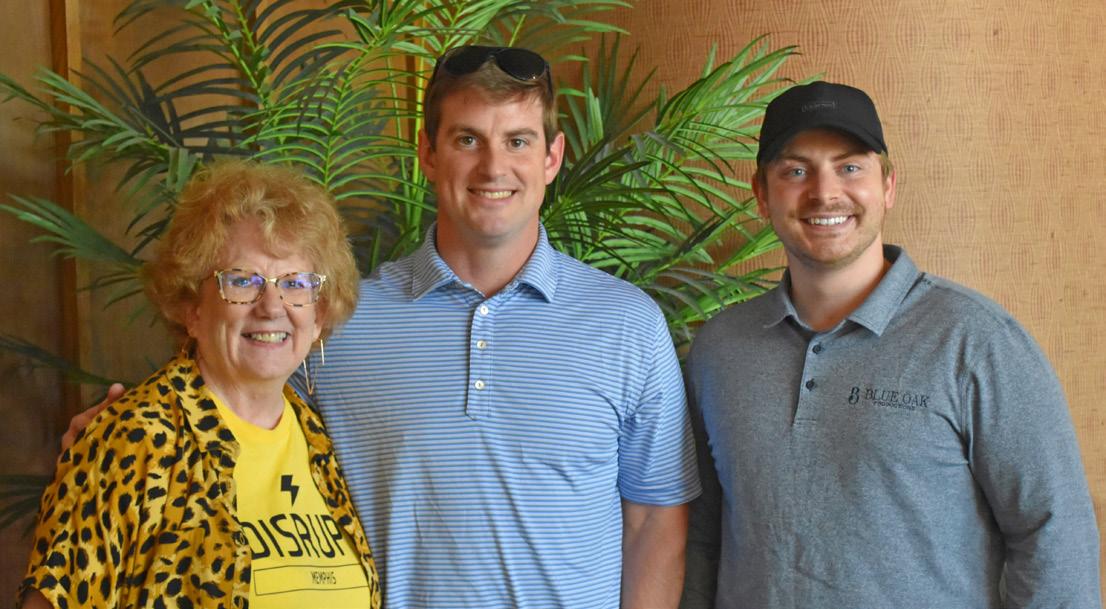







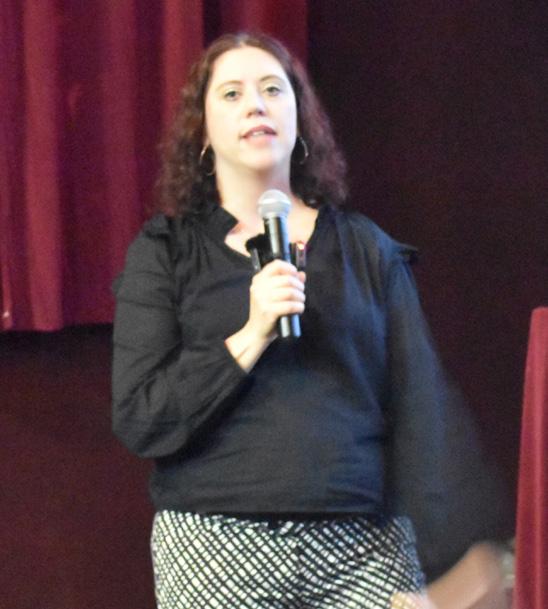




2 (L-R) Tisch McDaniel, DisruptHR Memphis Organizer, MMAGI; Jimmy Madeksho, DisruptHR Memphis Title Sponsor with McGriff, and Aris Federman, Videographer, Blue Oak Productions 3 Sally Pace with Nila Carrington. Nila discussed “When, Where, Why AI – Are You Ready? 4 Jill Bundy spoke on “ADHD: The Ultimate Workplace Flex.” 5 Angela Lamb, Emcee 6 Kelly King presented “HR as Duck.” 7 Latonika Blackmon discussed “The White Elephant in the Room: Blessing or Curse.” 8 Preston Cox’s topic was “Ready to Disrupt Your Disability Program? Come on Down!” 9 Dr. Deneen Lester spoke on “Happy Birthday to Sustaining Value as We Age.” 10 Sally Pace contributed “Steps to Drive Employee Engagement in the Health Plan.” 11 Finis Parkerson III spoke on “Are You a Connector?” 12 Amanda Maness presented, ““Friends with Benefits.” 13 Tammy Henry’s topic was “Second Chances: A Socially Responsible HR Practice.” 14 The registration table - Tamika Griffin, Porter Leath, Verlinda Henning, FaithPeople Memphis and Allison Gusmus, Regional One Health.




Lisa May is the Executive Vice President of the global background screening company Data Facts. She is responsible for managing the marketing department, working with sales initiatives to increase company growth, maintaining a small book of enterprise account relationships, and securing and strengthening strategic partnerships with vendors.
May is also a significant part of the Executive Leadership team responsible for molding the company vision, setting long term company goals, and making high-level decisions.
This year, May celebrates her 28th anniversary at Data Facts. During her time there, she has contributed significantly to the company's growth and success through sales, operations, marketing, and management roles.
Before joining Data Facts, May gained valuable experience working at a mortgage company during her college summers and held positions at NBC Bank in Memphis and Leader Federal Mortgage. She answered an ad for a Sales Representative position for Data Facts and the rest, as they say, is history.
May loves sales and looks back on her time as a representative fondly. "My favorite part of being a salesperson was building mutually beneficial relationships. Data Facts has active clients I originally worked with almost 20 years ago! There’s nothing more rewarding than understanding a client's needs and finding the perfect solution for them. Knowing I played a part in their success is incredibly fulfilling.”
During her sales tenure, May won the company’s Eagle Award (Salesperson of the Year) 4 times. She was also a recipient of Data Facts’ highest award (The Diamond Award). Her performance made her a natural choice when the Sales Manager position opened.
New to management, May had to learn how to effectively train, motivate, and mentor other team members into a cohesive unit. It was a challenge. “I was managing two different departments and lots of people. We had a small budget, especially compared to our large, corporate competitors. We had to fight to stay relevant”
Her passion for sales and her dedication to her clients have been pivotal to her success. She values the commitment to excellence at Data Facts, stating, "There are so many positive things I could say about working at Data Facts. What I appreciate most is the sense of family and commitment to excellence. Over the years, I've seen how our team supports each other and continually strives to provide the best service to our clients. It's this collaborative environment that keeps all of us focused on the common goal. Our company culture makes coming to work every day so rewarding."
Working for a women-owned enterprise (Data Facts is WBENC certified) inspired May. She reflects, "I’m honored to work for a women-owned enterprise. It's empowering to be part of an organization that values diversity and inclusion and champions female leadership at all levels. Here, women are encouraged to lead and succeed, which fosters a unique sense of community and collaboration. It demonstrates that with determination and hard work, we can break barriers and set new standards of excellence in our industry. This culture has been a significant factor in my professional growth and the company's year-overyear success."
Data Facts turns 35 years old in July 2024. Since opening their doors, uncountable changes have occurred in the background screening industry and in business in general. May rolled with the new trends by being adaptable. “I've always believed that you can never stop learning. To keep my skill set relevant, I immersed myself in the changing technology trends wherever I could. I made it a priority to attend HR Technology Conferences regularly, which provided invaluable insights into the latest advancements and trends. I’ve also made a point to attend Professional Background Screening Association (PBSA, formerly NAPBS) training as often as possible.”
“Additionally, I built strategic partnerships with our vendors to learn everything they knew, which helped me stay ahead of the curve. Even with the huge tech advances, I always focused on understanding and anticipating what our customers needed to give them peace of mind and help their processes run smoother.”
What advice would May give to those starting out at Data Facts?
"Be curious and proactive. Take the time to learn about every aspect of the company and our industry. Don't hesitate to ask questions to experienced colleagues. Build strong relationships with your team and clients, as trust and collaboration are key to success here. Lastly, stay adaptable and open to new challenges because change ALWAYS happens eventually. Embrace opportunities where you can learn and grow and always be willing to pitch in. Use every experience at Data Facts as a step toward achieving your professional goals."
Lisa May's professional journey with Data Facts is a testament to her dedication, adaptability, passion, and commitment to excellence. Her leadership, resourcefulness, and vision continue to drive the company's success, fostering a collaborative and empowering environment for employees, clients, and vendors.


As the business landscape continues to evolve at an unprecedented pace, professionals are gearing up for the 2024 Texas SHRM Global Business Conference. Set to take place in Houston, this event promises to be a cornerstone for innovative strategies, networking, and professional development in the realm of human resources and global business management.
As businesses seek to navigate the complexities of international laws, cultural nuances, and technological advancements, this conference is an essential gathering point to exchange ideas and foster collaborations.

With a lineup of speakers who are thought leaders in their fields, participants can expect to delve into topics ranging from advanced analytics in workforce planning to the impact of artificial intelligence on global recruitment practices.

Networking opportunities abound, with scheduled meet-ups and social events that allow attendees to connect with peers, mentors, and industry leaders. Whether you're a seasoned executive or a newcomer to the field of human resources, the Texas SHRM Global Business Conference is the perfect venue to inspire and be inspired.
The Texas SHRM Global Business Conference is not just an event; it's a pivotal experience that will shape the future of how businesses engage with the global environment. Mark your calendars and prepare to be part of shaping the next wave of global business innovations.
For more information and to register, visit www.texasshrmglobalconference.org. Embrace the opportunity to learn, share, and grow at the 2024 Texas SHRM Global Business Conference. The future is here, and it's filled with potential.

















CAROLINA SHRM IS EXCITED TO WELCOME YOU TO WESTERN NC.
• KEYNOTE SPEAKERS: JEFF HAVENS - BUSINESS
BETSY ALLEN - LEADERSHIP
DEM NI CLARK – INCLUSION
• POTENTIAL FOR 13.5
RECERTIFICATION CREDIT HOURS
• FABULOUS EMCEE PAUL POTORTI
• AMAZING ENTERTAINMENT AND FOOD
• COMMUNITY SERVICE ACTIVITY

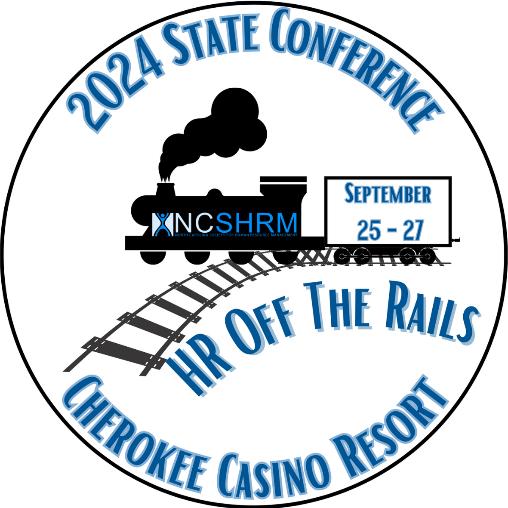
Imagine a workplace where everyone feels valued, respected, and heard. That’s the power of INCLUSION 2024, we’re not just talking about inclusion and diversity (I&D) - we’re providing the tools you need to make it a reality.

ACTIONABLE STRATEGIES: Gain practical tactics to turn I&D ideas into real-world results. Become the changemaker your organization needs.
ATTRACT TOP TALENT: Learn how to build an inclusive workplace that attracts and retains the best people.
CONTENT TAILORED FOR YOU: 50+ sessions, 75+ speakers, and 7 content tracks designed for all levels, from entry-level to executive.
Here’s what sets INCLUSION 2024 apart: Don’t miss out. Register today! shrm.org/inclusion-july
